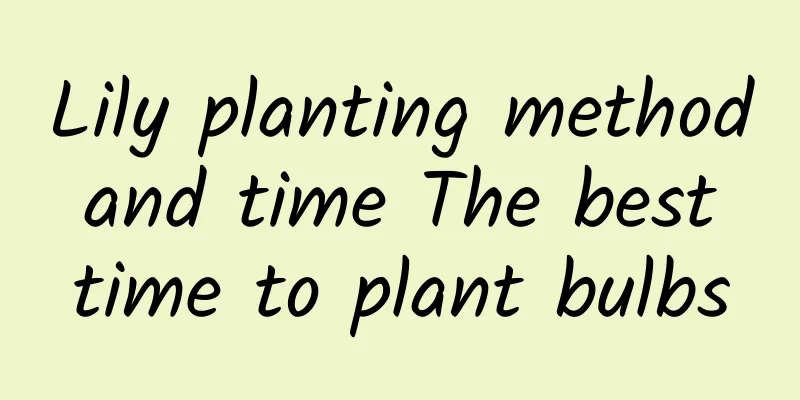How to remedy yellowing leaves?

|
In the process of potted plant maintenance, the leaves of potted plants at home often turn yellow due to unknown reasons. When faced with this situation, many friends will be at a loss. So how to remedy the yellowing of leaves? Let’s take a look below. 1. Burning yellow Symptoms: Some leaf tips of plants at home turn yellow or burnt. Cause: Some plants that prefer a cool environment are placed in direct sunlight, resulting in the plants being exposed to strong sunlight. Solution: You must fully understand the habits of the plants. For plants that do not like sunlight, such as spider plants and evergreens , they must be placed in a cool, humid place. 2. Albino yellow Symptoms: The branches and leaves of some plants were found to be turning yellow and white. Reason: The plants are kept in a dark place all the time. They cannot receive sunlight, resulting in insufficient light. The chlorophyll in the leaves gradually decreases, and the branches and leaves gradually turn yellow and white. Solution: At this time, the plant should be moved outdoors so that it can receive sufficient sunlight. 3. Alkali yellow Symptoms: The new leaves turn from green to yellow, but the veins of the leaves are still green. The leaves are yellow and green, and the difference is very obvious. If no timely measures are taken after this happens, the veins of the new leaves will gradually turn yellow, the edges of the leaves will wither and fall off, and even the plant may die. Reason: For some plants that like acidic soil, such as osmanthus and azalea, the soil in the pot is alkaline or the water used for watering is alkaline. Solution: Acidic fertilizers or acidic substances can be applied to improve the situation. 4. Damp-heat yellow Symptoms: Large areas of leaves of some plants turn yellow and wither. Reason: For some plants that are not tolerant to moisture and heat, there is poor ventilation and no shading or water control. Solution: The yellowing phenomenon of this plant is easy to solve. Just make sure to keep the indoor ventilation smooth, pay attention to shading and water control when the temperature is too high, and try to keep the soil in the pot dry. 5. Low temperature yellow Symptoms: Some cold-sensitive plants, such as white orchid and poinsettia , will have yellowing leaves or fall off when the indoor temperature is low or cold. Cause: In the cold winter, the indoor temperature is too low. Solution: Be sure to understand the habits of potted plants and make insulation preparations in advance when winter comes. 6. Fat and yellow Symptoms: The new leaves are relatively thick and shiny, but the surface of the leaves is uneven, and the tips are dry brown. The old leaves gradually turn yellow and fall off, and the tips of the leaves appear burnt yellow and dry. Reason: Most of the time it is because the plants are fertilized too much or the concentration is too high, especially when nitrogen fertilizer is used too much. Solution: Stop fertilizing at this time and increase watering appropriately to dilute the fertilizer content in the soil. 7. Hungry Yellow Symptoms: The roots of the potted plants are clumped together, the stems of the new leaves turn yellow first, and then the whole plant turns yellow or even dies. Cause: Potted plants at home have only been watered but not fertilized for a long time, or the pots have not been changed for many years, there is insufficient fertilizer, the fertilizer concentration is too low, and the interval between fertilization is too long. Solution: Be sure to replace the flower pots in time, apply fertilizer frequently, and apply thin fertilizers. And for this kind of fertilizer-deficient plant, remember not to apply too much fertilizer at one time to avoid burning the plant roots. 8. Water yellow Symptoms: Generally, the old leaves of the plant do not change significantly, the new leaves turn yellow obviously, wither and dull, and the stems become thin and yellow. Cause: It is mainly due to excessive watering and excessive water volume, which leads to excessive water accumulation in the pot, lack of oxygen in the soil, root rot of potted plants and poor soil water absorption capacity. Solution: When this happens, you should loosen the soil immediately, control watering significantly, and stop fertilizing. If the situation is serious, you can take the plant out of the pot, put it in a cool place to dry the moisture at the roots of the plant, and then put it back in the pot. 9. Dry yellow Symptoms: The leaves turn yellow or the edges turn brown, there is no obvious change in the new leaves, the old leaves turn yellow from the bottom to the top, and some old leaves may fall off. Cause: The plants have not been watered for a long time or have been watered too infrequently. Solution: Replenish the water of the plants in time, increase the amount of water or increase the watering frequency. That’s it |
<<: Can I transplant orchids in summer? Can I fertilize orchids?
>>: Can orchids survive in summer? How to plant them?
Recommend
What is the difference between Fangfeng and Guizhi
1. Leaf Difference The leaves of the windproof pl...
How does the copper coin grass survive the winter? Will the hydroponic copper coin grass die in the winter?
1. How to survive the winter 1. Pay attention to ...
Freesia planting time and method
Freesia, also known as freesia, is a perennial he...
Can rice water be used to grow green radish in water? How many days does the rice water need to ferment for watering the flowers?
1. Can I use rice water? Rice water can be used t...
How to take care of the flowers you just bought home
1. Change pots and soil If the flowerpot or soil ...
The best tasting rice variety (introduction to delicious rice varieties)
Delicious rice varieties "The most delicious...
Cultivation methods and precautions of ground dandelion
1. Maintenance methods 1. Soil: When growing grou...
How to grow Lover's Tears until it blooms
1. Suitable soil In order to grow the Tears of Lo...
Can Mimosa be placed indoors?
1. Can it be placed indoors? It is best not to pl...
The growing environment and local conditions of mint
Mint Growth Environment and Conditions Mint prefe...
What fertilizer to use for potted peppers
Fertilizer types for potted peppers 1. Base ferti...
The jasmine flowers I just bought are falling off. I will teach you a trick. Learn it now.
The reason why jasmine buds fall off: not adaptin...
What plants to plant on water-absorbing rocks
1. Moss Water-absorbing stone is a stone that abs...
Cultivation methods and precautions of Yuanbao tree
1. Breeding methods 1. Soil: Prefers soil with go...
Cultivation methods and precautions for hydroponic tulips
Hydroponic tulips are easy to grow. Compared with...









